Mexican Tumulus (2018)
Installation in public space. With Nayarí Castillo. 12-channel sound, blue objects, text tableaus, digital light. Real-time data link to Mexico City (partner: Toni Arellano). Public Art project Comrade Conrade (coordinator: Nicole Pruckermayr), Graz, autumn 2018.
Mexico was the sole state of the world that, on 19 March 1938, formally protested at the League of Nations against the annexation of Austria by Nazi-Germany. In their work “Mexican Tumulus”, Castillo and Rutz make reference to a settlement of German speaking exiles in Mexico during the time of the Third Reich. For instance, Irma Römer and the members of her exile salon dedicated their lives to the resistance against tyranny, fighting with creative tools for freedom, establishing sites for discourse in their new home country. Exile means painful separation, but also the chance to build new things. Among others, artist and native Austrian Wolfgang Paalen founded in Mexico the surrealist magazine DYN, and he was co-organiser of the first Latin American exhibition of surrealism. This sound installation is an hommage to those who offered resistance in times of darkness. The Ostbahnhof train station in Graz, chosen as the site of installation, acts both as an anchor point for traveling, but it is also a reminder that it was here that before the fall of the Third Reich, in April 1945, Hungarian Jews passed through on their death march.
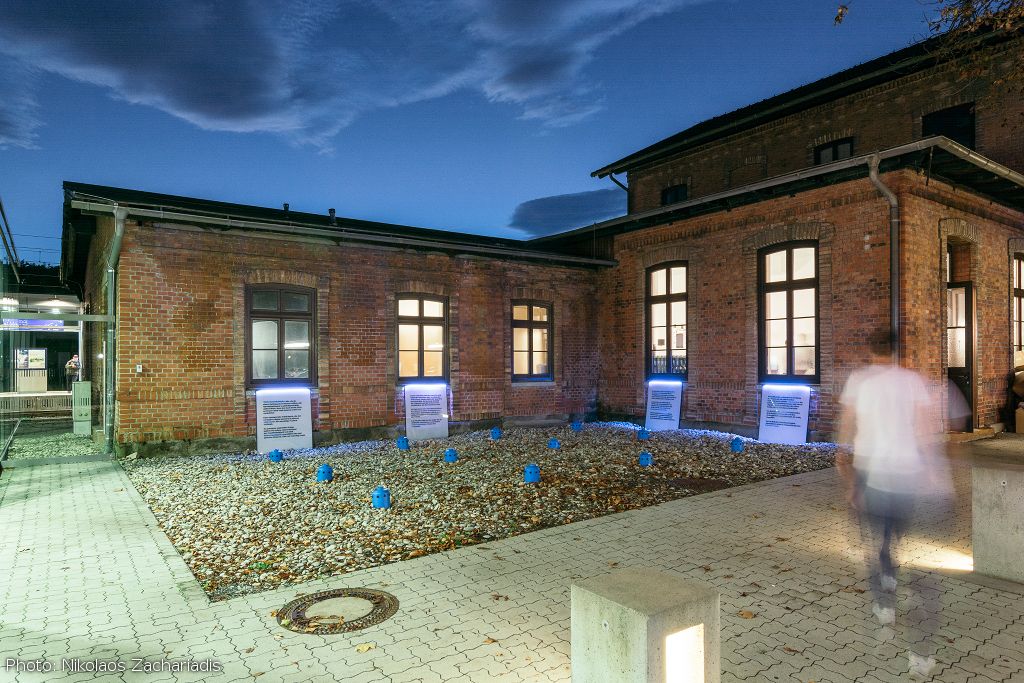
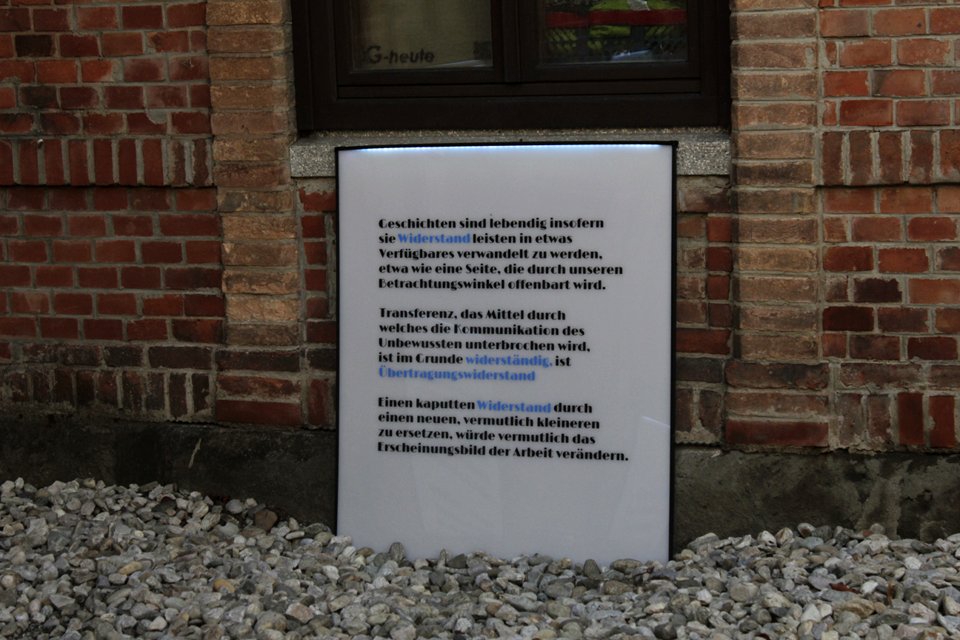
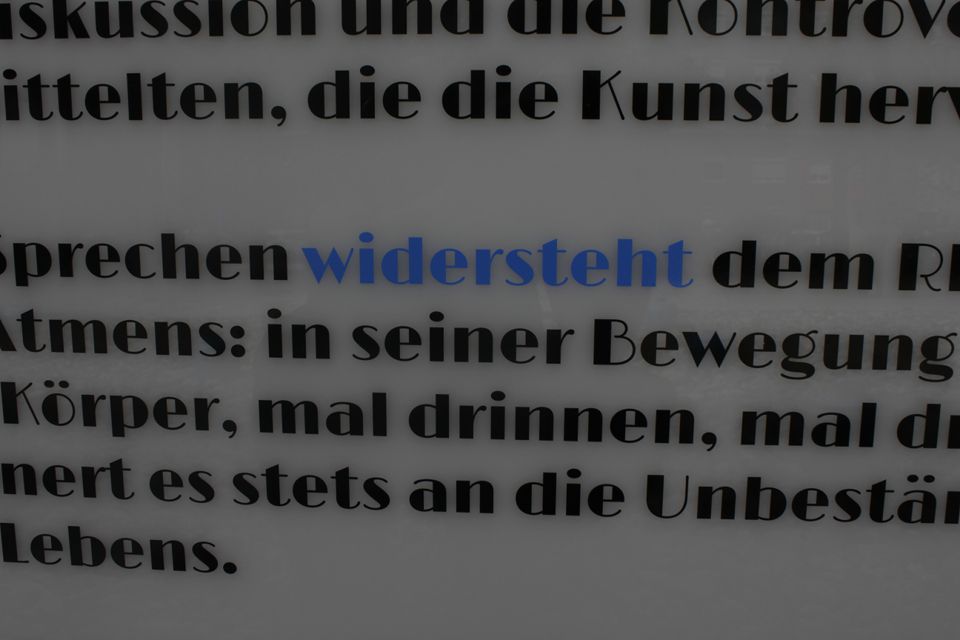
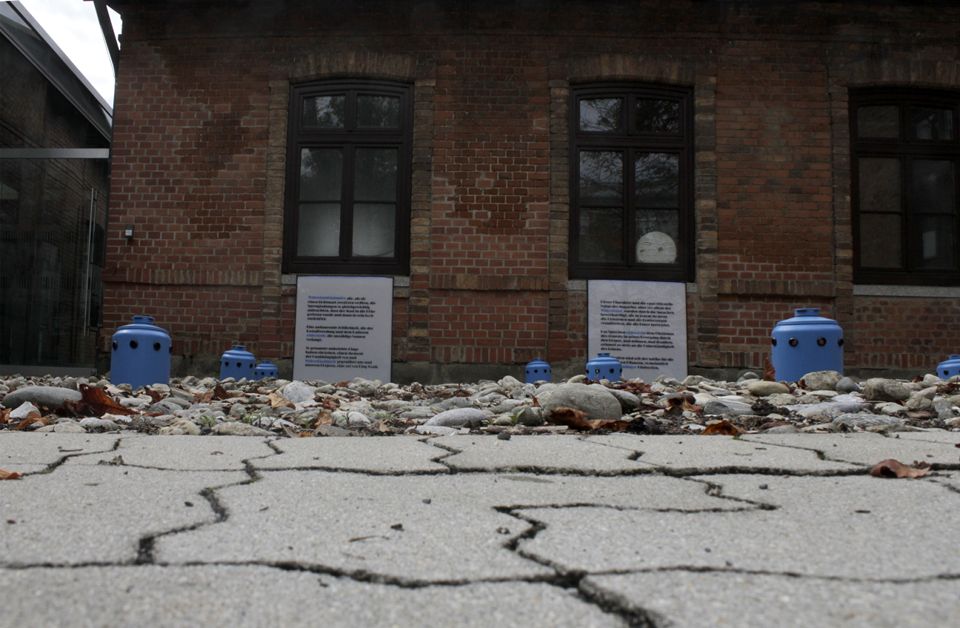
Mexican Tumulus
We created a form of simultaneity between the two cities by setting up a sound and light recorder in Mexico which transmits “non-representational” data back to Graz: Resonances of the city’s soundscape, colour values of the sky. The resonances are obtained by a minimum-phase transformation that eliminates temporal information, thereby also protecting the privacy of anyone unknowingly picked up by the microphone which is placed next to an open window, capturing the sounds of the street. The resonances are transformed into strokes, and played through speakers embedded in blue containers dug in an austere area filled with stones in front of the train station. Sound is heard in regular intervals, using twelve successively recorded strokes but reproduced as a unison, thus spatially articulating the blue objects laid out as a four-by-three grid.
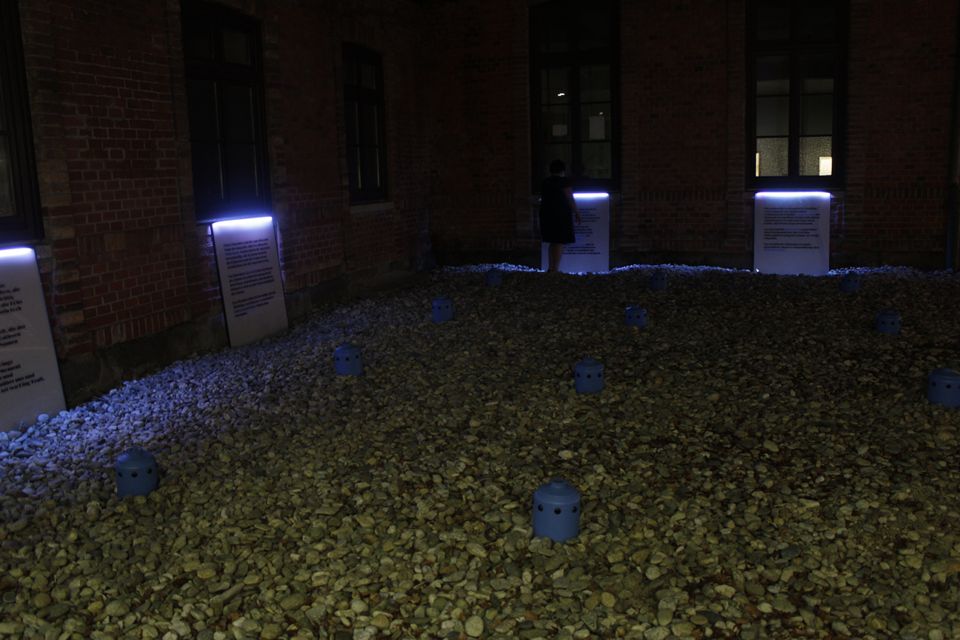
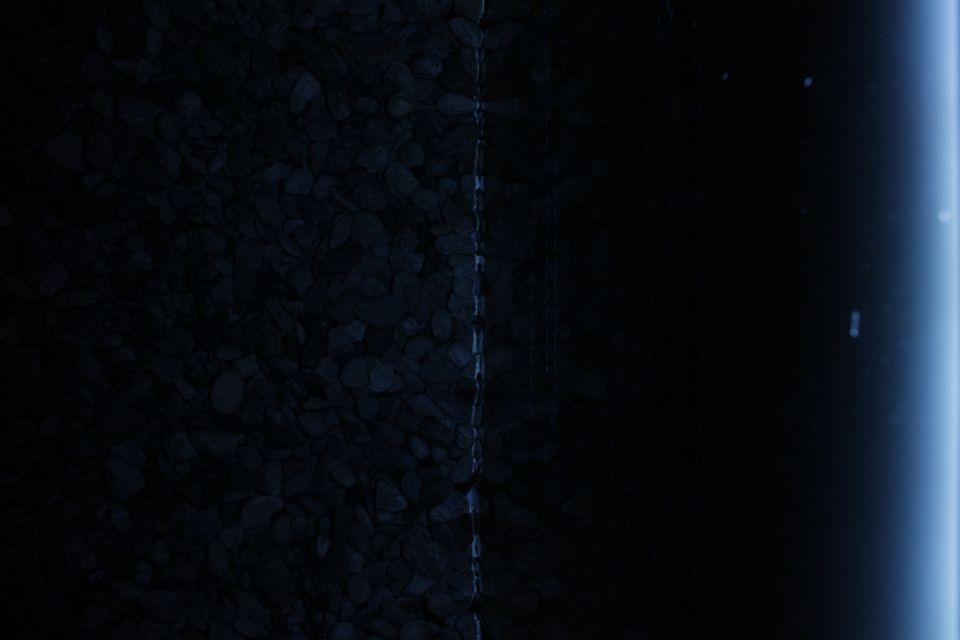
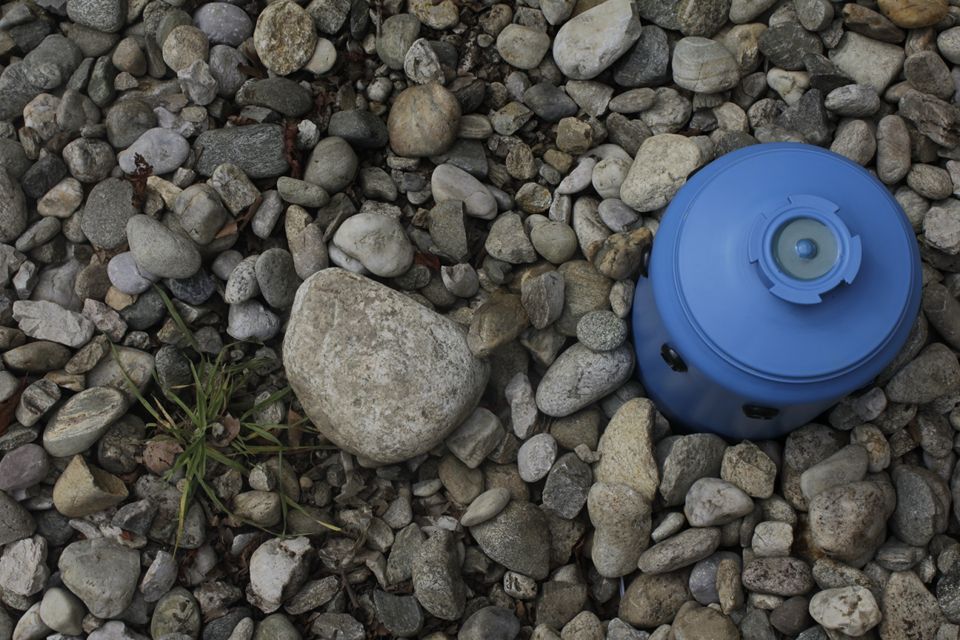
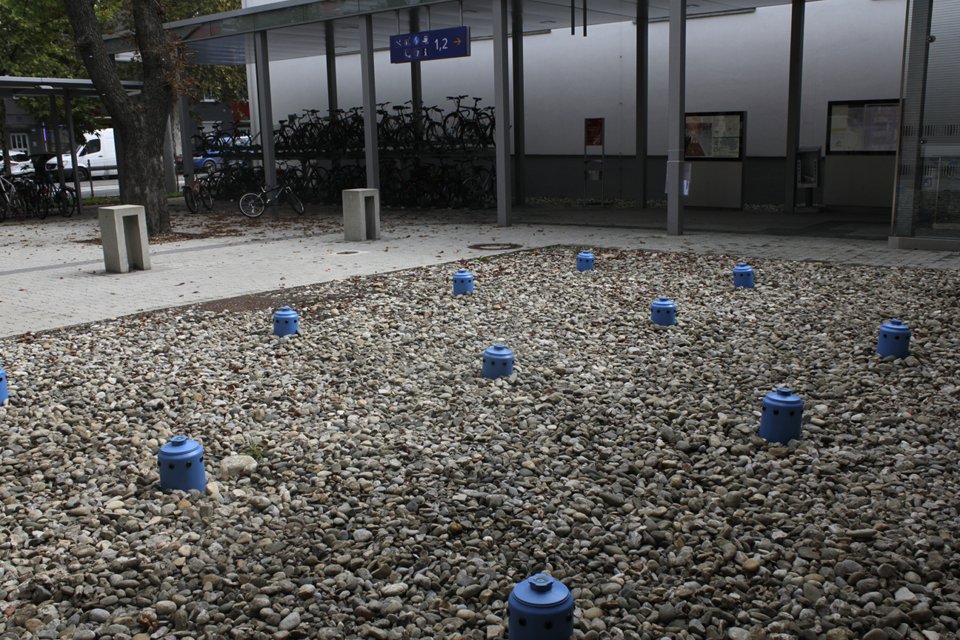
The sound containers are accompanied by an installation of four text panels. The panels display algorithmically determined text fragments addressing forms of resistance—Widerstand in German, with resist* and widerst* being the search terms for finding quotes from a heterogenous group of thinkers and artists, whose works have inspired us over the years. The panels’ top borders are illuminated by the sky colours received from Mexico, using again a transformation algorithm to turn photographs taken by the recorder into a small set of colour coefficients, reproduced with LEDs.
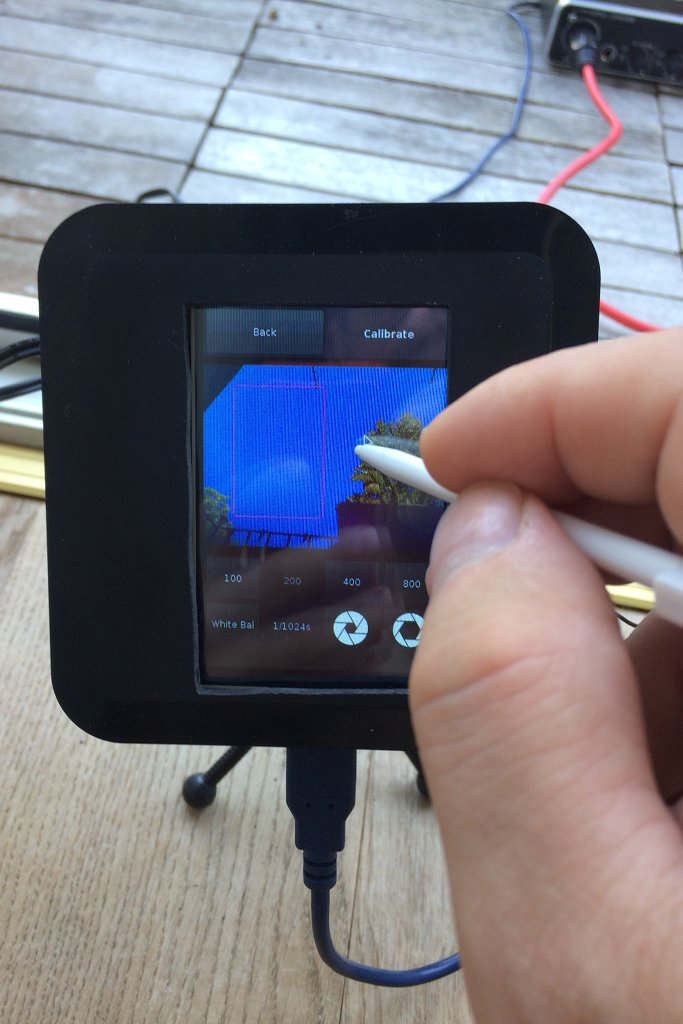
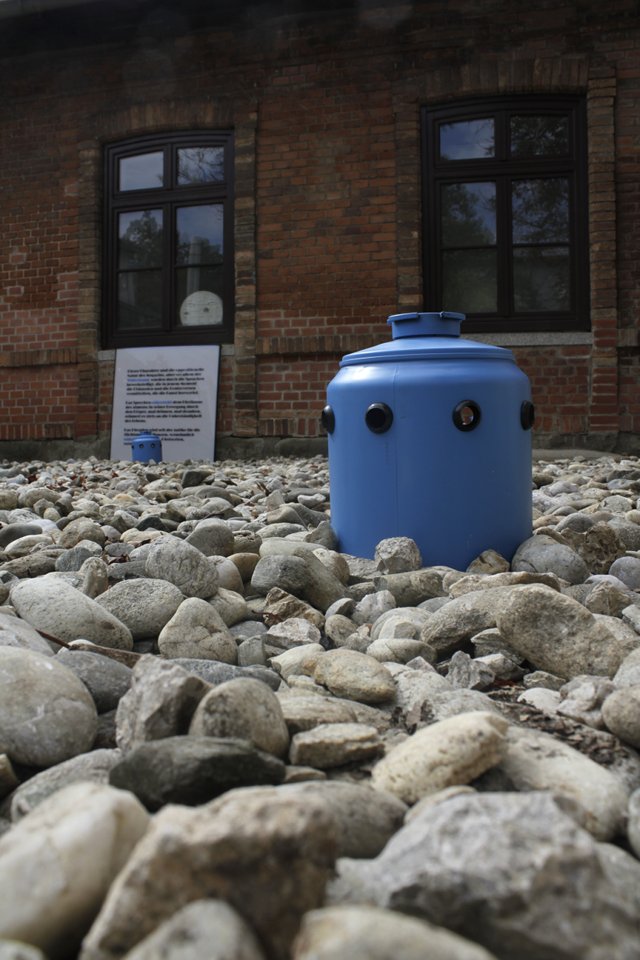
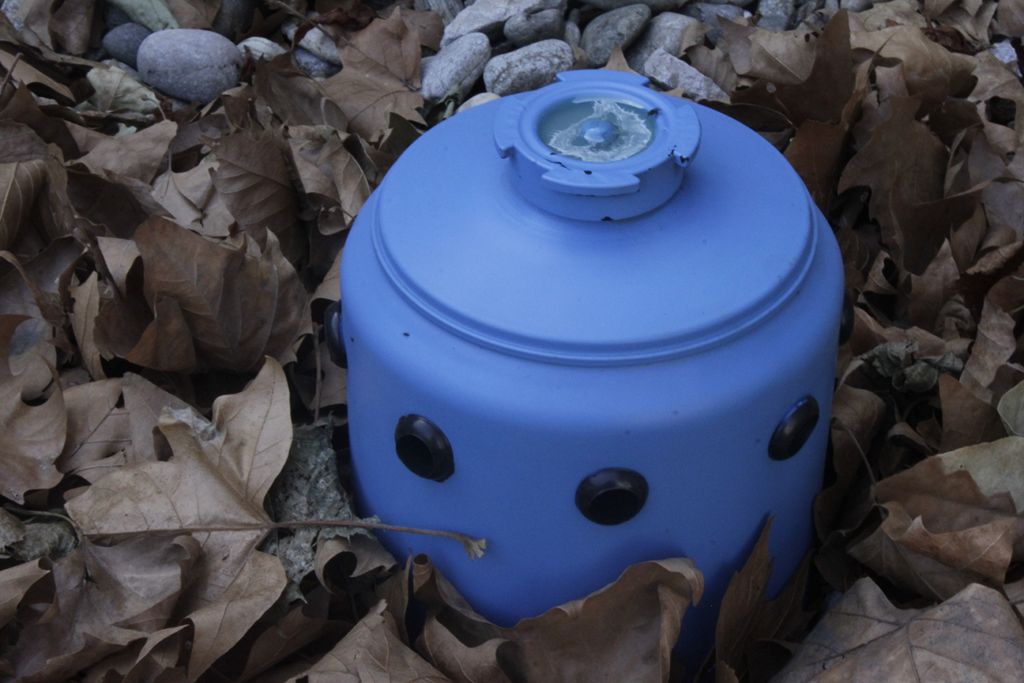
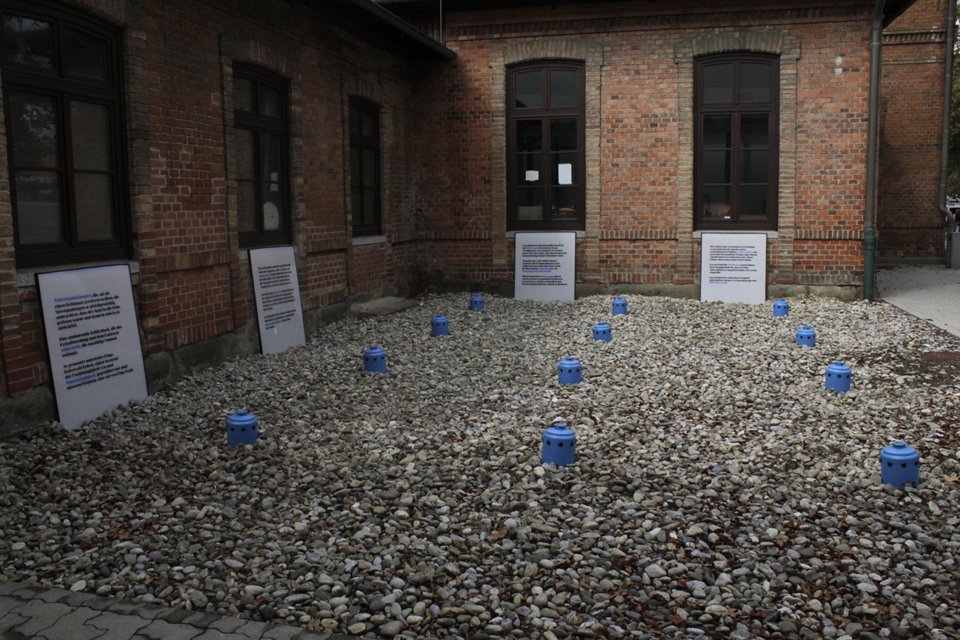
Further Formats
- Documentation on the umbrella project site
- Documentation on the Research Catalogue.